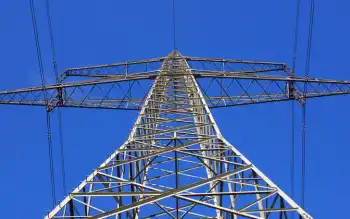Over 1 million Energy Star homes built in U.S.
By DailyTech
High Voltage Maintenance Training Online
Our customized live online or in‑person group training can be delivered to your staff at your location.

- Live Online
- 12 hours Instructor-led
- Group Training Available
Those areas with the greatest numbers are located in Houston, Texas (144,000); Dallas-Fort Worth, Texas (103,000); and Las Vegas, Nevada (80,000).
“This is an amazing achievement for the Energy Star program – but the real winners are the 1 million American families who have the chance to save money and keep harmful pollution out of the air. That’s great news for anyone who wants to cut costs and protect our planet,” said EPA Administrator Lisa P. Jackson.
“We’re going to keep the number of Energy Star homes growing, because every new Energy Star home is a step towards lower costs, cleaner air, and communities that are environmentally and economically sustainable. We’re giving everyday American homebuyers the power to lower their bills and join the fight against climate change.”
The Energy Star program is arguably the best-known energy efficiency program to consumers worldwide. It was first introduced by the United States Environmental Protection Agency in 1992, but has been since been adopted by Australia, Canada, Japan, New Zealand, Taiwan and the European Union as well.
Most people think of computers and appliances when Energy Star is mentioned, but the program has been labeling homes built in the United States since 1995. An Energy Star home uses at least 15% less energy than standard homes built to the 2004 International Residential Code (IRC), but may be even more efficient depending on the materials and design. The majority of Energy Star homes are 20%-30% more efficient than the typical home.
In order to earn the Energy Star label, a home must meet multiple energy efficiency guidelines established by the EPA. Builders typically use high performance insulation, multiple-paned windows, tight construction and ducting, and energy efficient cooling and heating systems to meet these guidelines. Energy Star qualified lighting and appliances may also be installed by builders.
Although the type of materials used are important, proper installation is critical for energy efficiency. An independent home energy rater is required to conduct onsite testing and inspections to verify that the homeÂ’s performance meets Energy Star requirements.
Any home or dwelling that is three stories or less can earn the Energy Star label once it has been verified to meet the standards of the EPA. Besides the typical detached house, multi-family homes, pre-manufactured homes, systems-built homes using modular construction, log homes, and concrete homes have all been given Energy Star labeling.
Retrofitting existing homes has also become very popular as homeowners try to save money on heating, cooling and electricity. Although most of the costs are borne upfront, the increased efficiency of the upgrades can pay the cost back many times over the long-term. Many homeowners also try for Energy Star certification before selling their home, as it helps to raise the value of their house.
Electricity and heating used in homes often comes from the burning of fossil fuels, whether at the home or from more distant coal-fired power plants. This can create smog, acid rain, and raise the risks of global warming.
The EPA estimates that the Energy Star program will help save homeowners more than $270 million this year on their utility bills, while avoiding greenhouse gas emissions equivalent to those from 370,000 vehicles. Since inception, the Energy Star program has saved Americans more than $1.2 billion on their energy bills, and reduced greenhouse gas emissions by 22 billion pounds.
There are more than 6,500 builders across the nation currently building homes that earn the Energy Star label. Qualified new homes can be found in every state within the United States.











